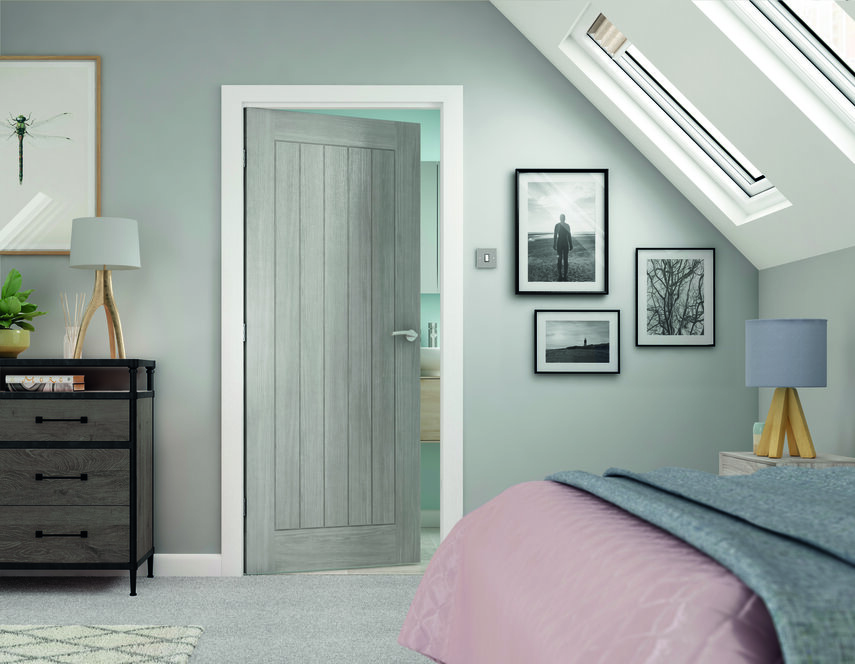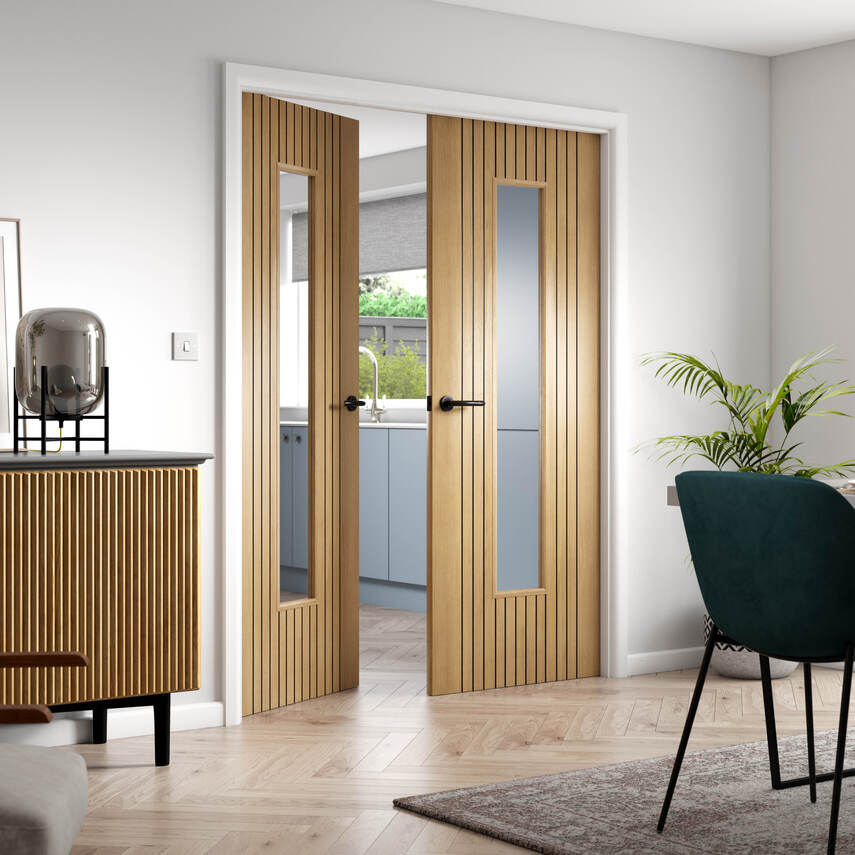How to Stop a Door from Creaking
A high-pitched squeaking or creaking door can be a huge annoyance and disturb the peace of your home. The good news is that fixing a creaking door is often a simple task that requires minimal tools and effort.
In this blog, we’ll explore the common causes of door creaks, walk you through a step-by-step guide to resolving them, and offer tips to prevent the problem from returning. By the end, your internal door should open and close as silently as it did when it was brand new.

Common causes of creaking doors
Once you identify the cause of your creaky doors, you can start taking steps to fix the problem. Here are the most common reasons your door might be making that unwelcome noise:
Worn hinges
Over time, door hinges can wear out due to constant use. This can cause the metal to rub against itself or the screws to loosen, which results in creaking sounds when the door moves.
Lack of lubrication
Hinges rely on lubrication to move smoothly. If they dry out, there will be more friction between the moving parts, which leads to squeaks and creaks.
Changes in temperature or humidity
Wood expands and contracts with fluctuations in temperature and humidity. This can cause the door or frame to shift slightly, which can put pressure on the hinges or other components. This can then result in creaking sounds.
Door misalignment
If a door is slightly misaligned, it might rub against the frame or put extra strain on the hinges. This uneven movement can produce creaking noises.
Tools you’ll need to stop your door creaking
Before you tackle your creaking door, it can be a good idea to gather the tools and materials you’ll need. Here’s a quick checklist:
- Screwdriver: You’ll need a screwdriver that matches the screws on your door hinges, which could be a flathead or a Phillips head
- Lubricant: A high-quality lubricant, such as WD-40, silicone spray or petroleum jelly, will help reduce friction
- Clean cloth: A clean cloth or rag will be needed to wipe away dirt, dust or old lubricant from the hinges
- Household cleaner (optional): A mild household cleaner or soapy water can help remove stubborn dirt
- Hinge pins (optional): If the hinge pins are bent or corroded, you might want to have replacement pins ready
- Hammer (optional): A hammer can help remove stuck hinge pins gently without damaging the door or frame
Step-by-step guide: how to stop your door from creaking
Fixing a creaking door is often a straightforward task that requires just a little time and the right approach. Below is a step-by-step guide to eliminate any annoying creaks.
Inspect the hinges
You should start by carefully opening and closing the door to identify the source of the creak. Pay close attention to the hinges, as these are the most common culprits. Look for signs of wear, rust or misalignment.
Tighten loose screws
You can then use a screwdriver to tighten any loose screws on the hinges. Be careful not to overtighten, as this could strip the screw holes.
Clean the hinges
Use a clean cloth to wipe the hinges thoroughly. For stubborn dirt and grime, use a household cleaner or soapy water. You should then dry the hinges completely before proceeding to the next step.
Apply lubrication
Once the hinges are clean, you can apply a small amount of lubricant, such as WD-40 or petroleum jelly. Focus on the moving parts of the hinges, such as the pin and the joint. You can open and close the door a few times to help the lubricant work its way into the hinge.
Adjust the door alignment
If your door is still creaking after cleaning and lubrication, it might be misaligned. You can check if the door is rubbing against the frame or if it sags. If it does, you can tighten or adjust the screws on the hinges to realign the door. You may also need to slightly reposition the hinges if the issue persists.
Replace worn hinges or pins (if needed)
If the hinges or hinge pins are too damaged or corroded, you may need to replace them. You can remove the old hardware and fit new ones – take care to ensure they are securely attached and properly aligned.

When to replace your door or seek professional help
While most creaking doors can be fixed with simple maintenance, some cases might require you to replace parts, the entire door, or to call in a professional.
Here’s when you might need to take things further:
Severely worn or damaged hinges
If your hinges are visibly bent, cracked or corroded, no amount of cleaning or lubrication will solve the problem. You’ll need to replace the hinges with high-quality options to ensure your door works correctly and smoothly long-term.
Repeated creaking even after repairs
If your door continues to creak despite cleaning, lubricating and adjusting the hinges, it could indicate more serious issues, such as a warped door frame or incorrectly installed hardware. In this case, you may need to replace the entire door, or call in a professional to assess the problem.
Sagging door
If your door sags or drags on the floor, it may be that the hinges are too damaged to support its weight. Replacing the hinges or hinge pins might help, but if the problem persists, professional adjustment or structural repair may be necessary.
Difficulty removing hinge pins
If the hinge pins are rusted in place and won’t move even with tools, you shouldn’t attempt to force them, as this could cause damage. You should instead call a professional, who will have the right equipment to safely remove and replace the pins without harming your door or frame.
Structural issues
In some cases, the creak might not be caused by the door or hinges at all but by structural problems with the door frame or surrounding walls. A professional carpenter will be able to assess the issue and suggest the best course of action.
Maintenance tips for your internal doors
It can be easier to prevent a creaking door rather than fix one. With some simple steps, you can keep your doors operating smoothly.
Lubricate hinges regularly
You can apply a small amount of lubricant to your door hinges every six months to prevent them from drying out. This will minimise friction and keep the hinges moving quietly.
Clean hinges routinely
Dust and dirt can accumulate on hinges over time, which will cause unnecessary wear. You can wipe down the hinges periodically with a clean cloth to remove debris.
Tighten screws periodically
Hinges will often loosen with repeated use. You should check the screws every few months and tighten them if needed to ensure the door stays securely in place.
Monitor for signs of wear
You should inspect your doors and hinges regularly for signs of damage, rust or misalignment. If you can catch small issues early, you could save time and money in the long run.
Protect against humidity
For wooden doors, try to maintain consistent indoor humidity levels to reduce the risk of warping. You can use a dehumidifier in particularly damp areas to help with this.
Check door alignment
Take notice to check your door isn’t sagging or rubbing against the frame. If you see it is misaligned, address it quickly by adjusting the hinges or screws.
Use quality hardware
You should invest in high-quality hinges and screws, especially for heavy doors. Cheaper hardware may wear out faster and lead to more frequent issues. We advise using three hinges, as it helps to ensure the weight of the door is more evenly distributed and that it will remain secure in the frame.
JB Kind has a huge range of interior doors in a variety of styles. Download our brochure or contact us to find out more.

